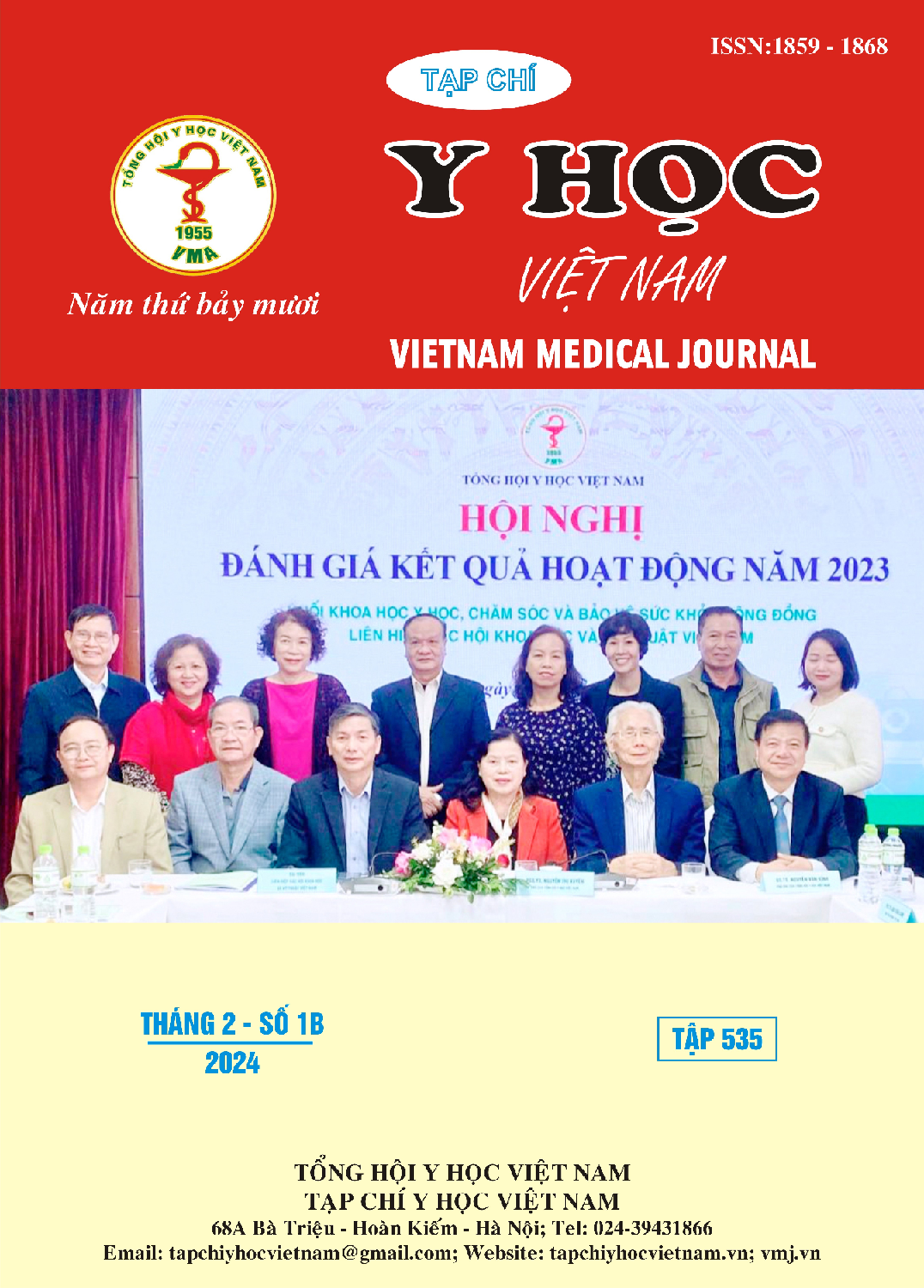CLINICAL, LABORATORY CHARACTERISTICS AND THE TREATMENT RESULTS OF COVID-19 PATIENTS RECEIVING ADSORBENT HEMODIALYSIS AT NGHE AN PROVINCE
Main Article Content
Abstract
Background: The treatment of COVID-19 patients, especially severe and critical patients, is still a challenge for the limited healthcare system in Vietnam. Hemodialysis adsorption has been shown to be an effective and safe method of removing cytokines in the treatment of COVID-19 patients. Objectives: 1). To describe the clinical and laboratory characteristics of COVID-19 patients undergoing adsorbent hemodialysis; 2). To comment on the treatment results of COVID-19 patients above. Research subjects and methods: A cross-sectional descriptive study on 28 COVID-19 patients receiving adsorbent hemodialysis treatment from 6/2021 to 12/2022 at the hospital where is treatment COVID 19 in Nghe An province. Results: The mean age of the study group was 61.7 ± 11.4 years. The youngest is 31 years old and the oldest is 87 years old. The male proportion is more dominant (53.6%) than women (46.4%). 92.8% of patients had dyspnea; fever accounted for 85.7%; dry cough accounted for 85.7%; loss of sense of smell accounted for 14.3%. The average blood pressure was 82.7±9.2mmHg; Pulse was 99.5± 13.4 l/min, SpO2 was 91.6±8.7%. Laboratory results: pH 7.33 ± 0.1; PaO2 77.4±34.2mmHg; PaO2/FiO2 123.6±91.1; CRP 110.4 ±94.7mg/l; ferritin 1791.4 ±1467.8ng/mL; LDH 418.8±142.4U/L; D-dimer 3646.2 ±4461.3 mcg/l.he average number of HA 330 dialyzers used was 3.1 ± 1.1 with the average HA 330 filtration time being 12.4 ± 4.7 hours and the anticoagulant used was mainly heparin (accounting for 96.4 %). Patients were underwent early adsorbent hemodialysis (before 72 hours) have a higher survival rate than patients with adsorbent hemodialysis after 72 hours. Conclusion: The most common symptoms in severe and critical COVID-19 patients were dyspnea, fever, and dry cough. The most common symptoms in severe and critical COVID-19 patients are difficulty breathing, fever, and dry cough. Patients were underwent early adsorbent hemodialysis (before 72 hours) have a higher survival rate than patients with adsorbent hemodialysis after 72 hours.
Article Details
Keywords
Covid-19, adsorbent hemodialysis, severe and critical patients.
References
2. Bộ Y tế, Quyết định Số: 250/qđ-byt về việc ban hành hướng dẫn chẩn đoán và điều trị covid-19. 2022.
3. Bộ Y tế, Hướng dẫn chẩn đoán và điều trị COVID-19, Ban hành kèm theo Quyết định số 4689/QĐ-BYT ngày 06 tháng 10 năm 2021, Hà Nội, tr.46-47. 2021.
4. Lympic PV, Phước DT. NGHIÊN CỨU ĐẶC ĐIỂM LÂM SÀNG, CẬN LÂM SÀNG TRÊN BỆNH NHÂN COVID-19 NẶNG VÀ NGUY KỊCH CÓ LỌC MÁU HẤP PHỤ TẠI BỆNH VIỆN ĐA KHOA THÀNH PHỐ CẦN THƠ. ctump. 2022;(49):46-53. doi:10. 58490/ctump.2022i49.208
5. Alavi Darazam I, Kazempour M, Pourhoseingholi MA, et al. Efficacy of Hemoperfusion in Severe and Critical Cases of COVID-19. Blood Purif. 2023;52(1):8-16. doi:10.1159/000524606
6. Bonanad C, García-Blas S, Tarazona-Santabalbina F, et al. The Effect of Age on Mortality in Patients With COVID-19: A Meta-Analysis With 611,583 Subjects. J Am Med Dir Assoc. 2020; 21(7): 915-918. doi: 10.1016/ j.jamda.2020.05.045
7. ALIMOHAMADI Y, SEPANDI M, TAGHDIR M, HOSAMIRUDSARI H. Determine the most common clinical symptoms in COVID-19 patients: a systematic review and meta-analysis. J Prev Med Hyg. 2020;61(3): E304-E312. doi:10.15167/ 2421-4248/jpmh2020.61.3.1530
8. Caruso PF, Angelotti G, Greco M, et al. The effect of COVID-19 epidemic on vital signs in hospitalized patients: a pre-post heat-map study from a large teaching hospital. J Clin Monit Comput. 2022; 36(3): 829-837. doi:10.1007/ s10877-021-00715-y
9. Pranshu K, Shahul A, Singh S, Kuwal A, Sonigra M, Dutt N. Predictors of mortality among hospitalized patients with COVID-19: A single-centre retrospective analysis. Can J Respir Ther. 2022;58:98-102. doi: 10.29390/ cjrt-2022-019
10. Tang Y, Liu J, Zhang D, Xu Z, Ji J, Wen C. Cytokine Storm in COVID-19: The Current Evidence and Treatment Strategies. Frontiers in Immunology. 2020;11. Accessed December 25, 2023. https://www.frontiersin.org/ articles/10. 3389/ fimmu.2020.01708


